English
The Shikoku pilgrimage trails in Komatsushima
Following in the footsteps of historical figures

Among the 1,200 km long Shikoku Pilgrimage trails, some sections have remained unchanged for hundreds of years. These old trails are designated as national historic sites and mostly in the mountains.
But the one in Komatsushima city, Tokushima is a unique path running through bamboo forests and fields. Nearby, another old trail that retains signposts donated by the father of the Shikoku Pilgrimage but was forgotten for a long time, has been recovered by the locals.
From Onzanji to Tatsueji, a unique historic trail through a bamboo grove and farmland
Most parts of the 1,200 km Shikoku Pilgrimage trails were not built specifically for pilgrims, but regular roads local villagers and general travelers have been walking on since old times. Inevitably, they have been paved with concrete and asphalt for cars today.
The rest of the few sections that remain unpaved, mostly due to their location in the mountains, are designated as the national historic sites.
Among all such historic trails, the one between Onsanji, the 18th temple of the Shikoku 88 temple pilgrimage and Tatsueji, the 19th temple, located in Komatsushima city, stands out for its uniqueness.
This one run though bamboo forests and farmland near a relatively busy residential area.

As each trail between two temples is called as the name of the temple with the higher number. Therefore, the 4km trail between Onzanji and Tatsueji is known as the Tatsueji trail. In the same way, the trail coming from the 17th temple through Tokushima city to Onzanji is called the Onzanji trail, which is approximately 18km long.
Most parts of the Onzanji trail are paved and go through the busiest areas in Tokushima. Only the last 400m part before Onzanji is unpaved natural trail and designated as a National historic site.

It can be so easy to miss the entrance to the narrow path behind a couple of houses along the road to Onzanji, but once you enter, the atmosphere of the trail around you changes dramatically. Following the old stone masonry walls, you will soon see the main temple gate of Onsanji.
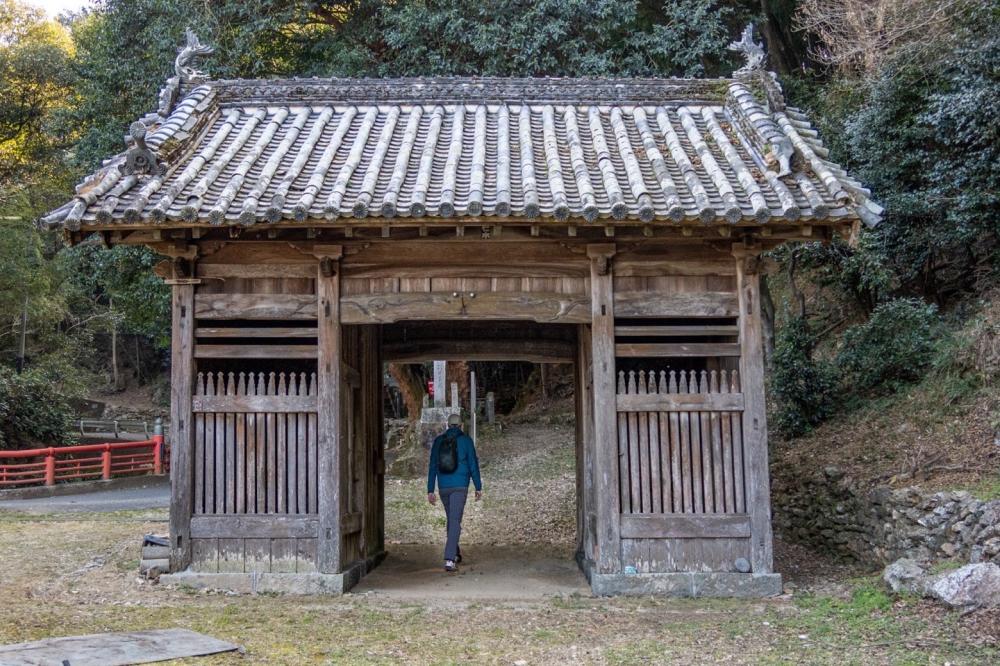
Just beyond the gate stands a big tree with reddish brown bark. It’s a Prunus zippeliana, also called Biranju in Japanese.
A legend said that Kobo Daishi in later life was practicing at Onzanji and planted the tree here.

The trail for walking and the road to the temple cross each other by the temple gate and the big Biranju tree, so even if you missed the turn into the natural trail, you can enter from here. Leaving the road, the well-maintained traditional pilgrim path starts ascending to the temple.
When you see a big Kobo Daishi statue standing at the top of the slope, you are almost at Onzanji.
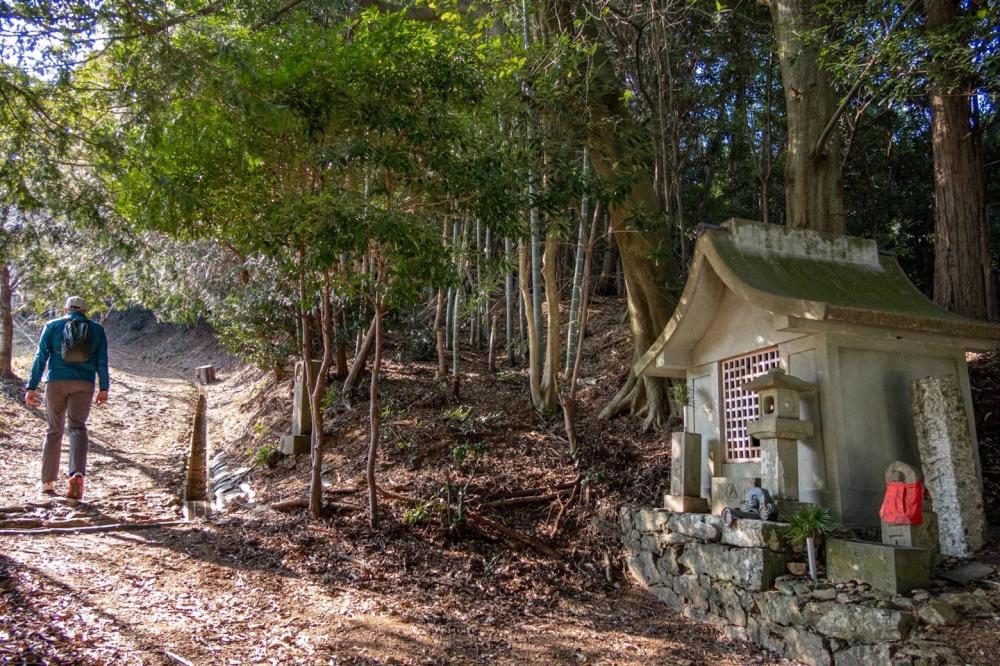

When Kobo Daishi stayed at the temple to practice, his mother, Tamayorigozen, came to visit him. She became a Buddhist nun, took the tonsure (shaving the head), and dedicated her hair at this temple.
The name of the temple came from this episode when Kobo Daishi took care of his mother. It was then that he planted the Biranju tree by the temple main gate to mark the event.

After visiting Onzanji, the trail goes down the slope by the big Kobo Daishi statue and then goes to the right.
The first 500 meters of the trail from Onzanji to Tatsueji is also designated as a national historic site.
This is the particularly unique section among all the historic Shikoku pilgrimage trails.
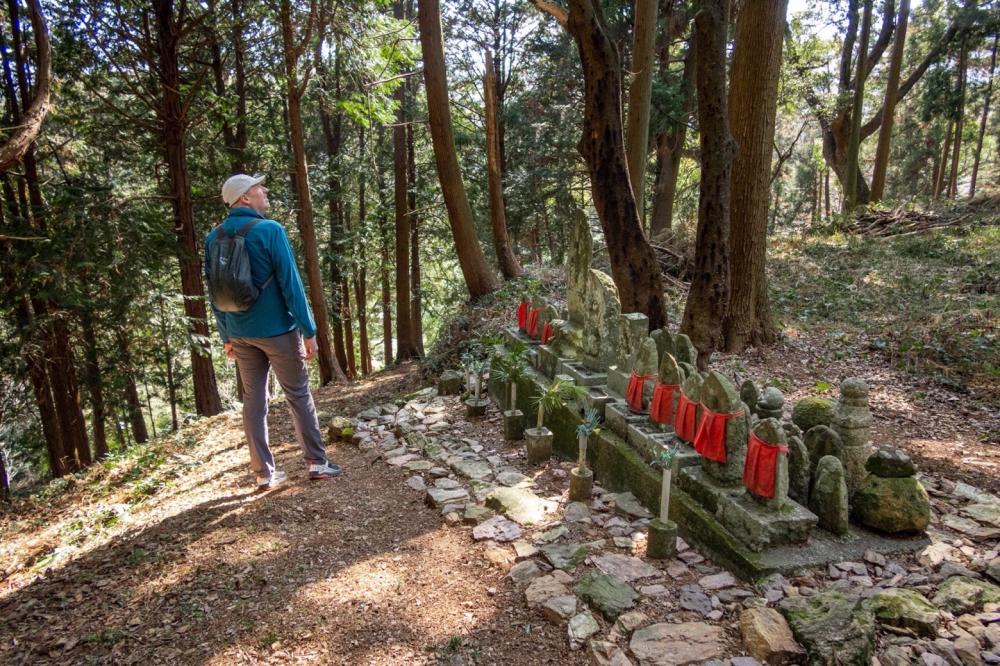
Coming out of the small mountain, you will pass a couple of cattle barn from which black Japanese cows are curiously watching and then the trail goes into some woods. All you need is following the red arrows.
Beyond the woods, the trail runs through a beautiful lush green bamboo forest. Deep in the bamboo, the sunlight shines through the leaves.
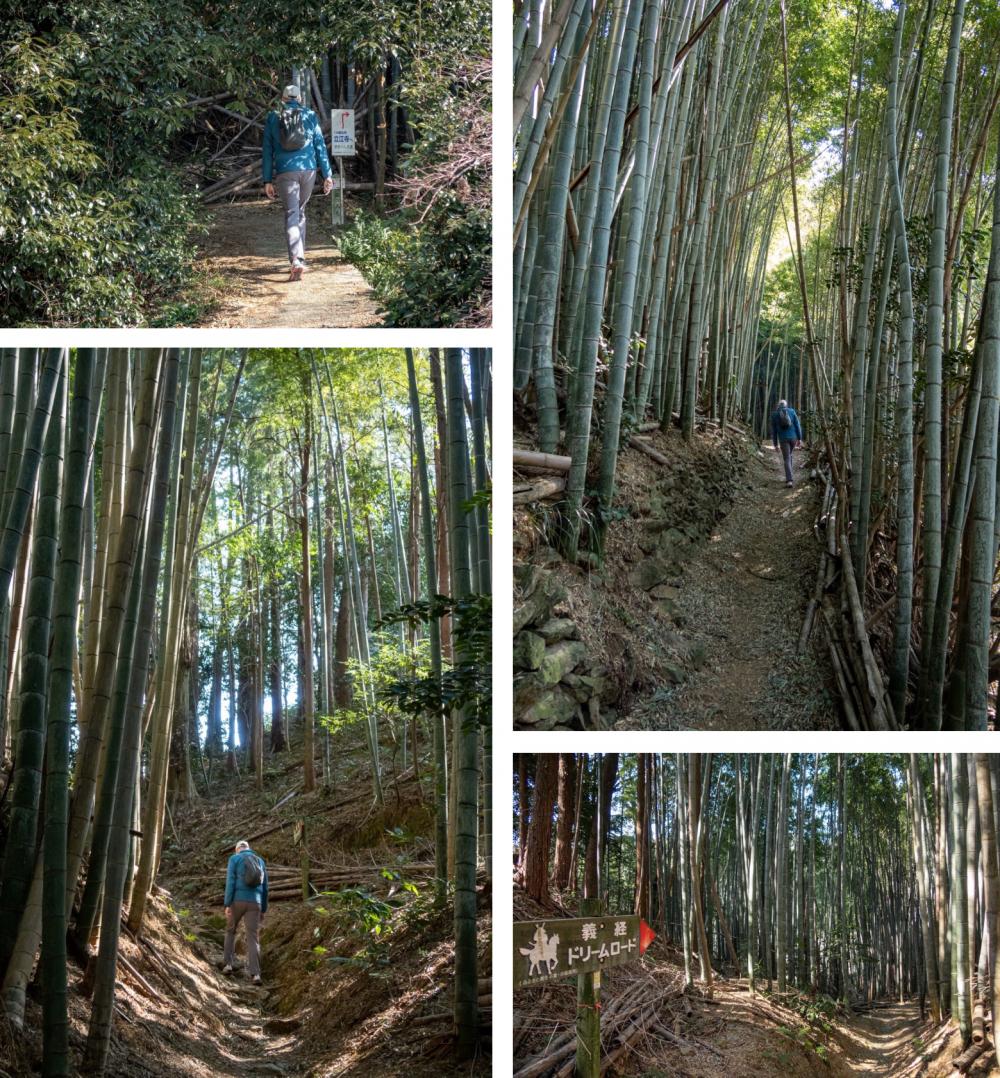
Along the well-tended bamboo forest, there are some signs of the "Yoshitsune Dream Road.”
Yoshitsune Minamoto (1159 – 1189) was a historical hero in the Genpei Civil War era from the late 11th century to the late 12th century.
At the end of the Genpei War, Yoshitsune and his army landed in the shore of what is now Komatsushima city, to launch a surprise attack on the opponent armies in Yashima, which is now the area between the 84th temple and the 85th temple in Kagawa. Back then, this area around Onzanji was their enemie’s territory so they had to go through the area secretly. The 10 km route that is said they took is named "Yoshitsune Dream Road," and maintained as a hiking path. This bamboo forest trail is a part of it.
Along the pilgrimage trails in this area, there are some other legendary sites associated with the adventure of Yoshitsune and his army. These legends show that these trails had been here long before the Shikoku pilgrimage became popular and they came to walk this trail from late 17th century.
Imagine you are now walking on the same trail that those historical heroes ran through. Isn’t it thrilling?
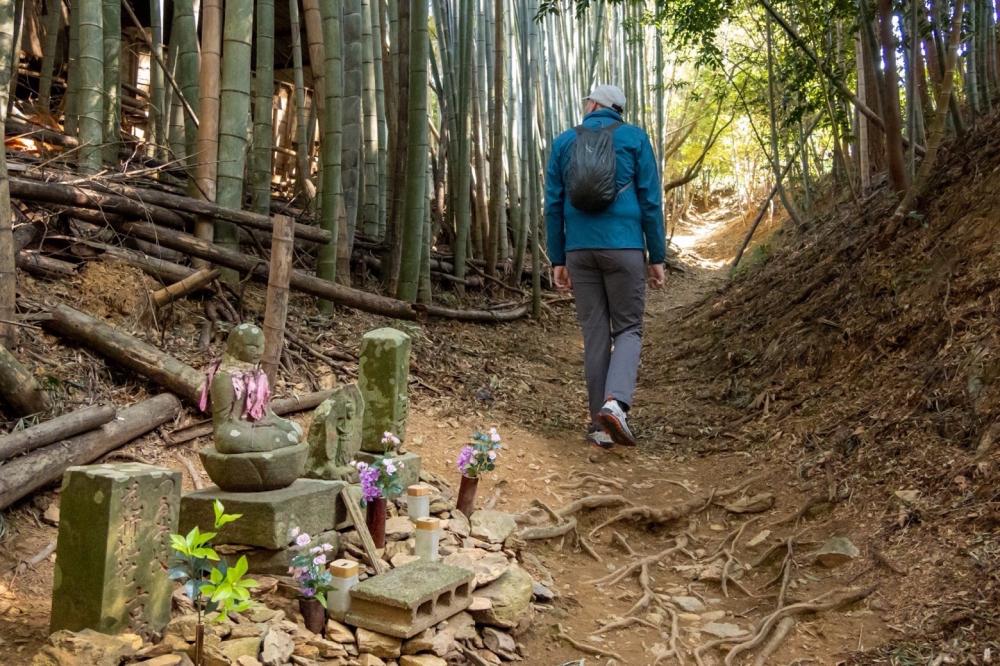

After the bamboo forest, there is a small graveyard and a temple called Shaka-an, which also has a legend related to Kobo Daishi when he was a baby. The temple has a very ancient looking Budddah’s foot stone that is said to be probably the oldest of its kind in Shikoku.
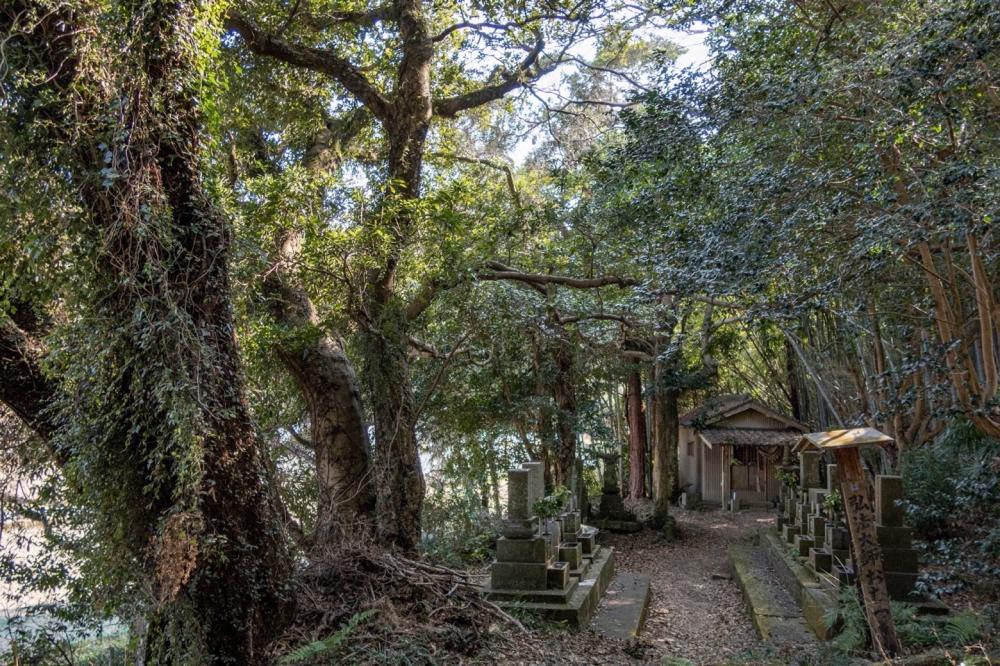
The pilgrimage trail now runs on a paved road, but a red arrow on a pilgrimage route sign points at an alternative route through the farmland.

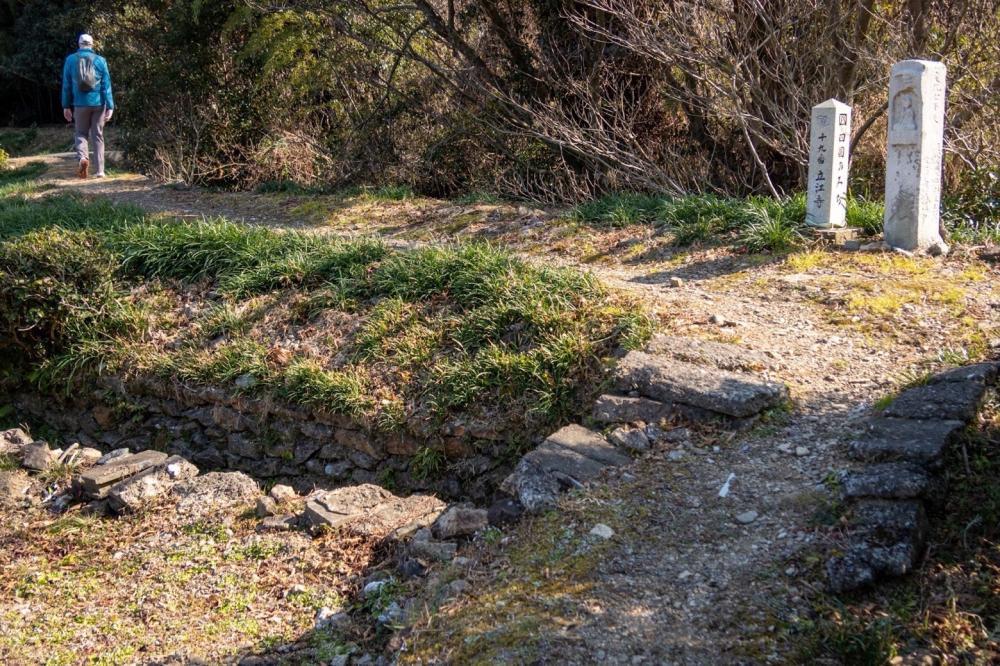
Since this section just goes through farmland behind a residential area, people might not recognize its value. Actually, it may look better to take the road down from Onzanji and go straight to Tatsueji on map. But please wait a second and think twice, or you are going to miss a hidden gem.
These interesting historic trails around Onzanji are so close to the center of Tokushima city and easily accessible, yet allow you to trace the footsteps of old pilgrims and historical heroes.

Pilgrimage trails around Tatsueji, walking in the footsteps of the father of the Shikoku pilgrims
Tatsueji, the 19th temple of the Shikoku 88 temples pilgrimage, also has interesting trails that are easy to walk and have historical value in its neighboring area.
About 600 meters or a 10-minute walk from the temple along the pilgrimage trail towards the 20th temple, there is a large stone pillar with "Tatsueji Okunoin (the inner sanctuary) New Shikoku 88 pilgrimage" inscribed.
Let’s make a turn here to see what it is. Walking on a narrow village road a little further, you will find a hermitage-like tiny temple, Seisuiji, at the foot of the lush green mountain.
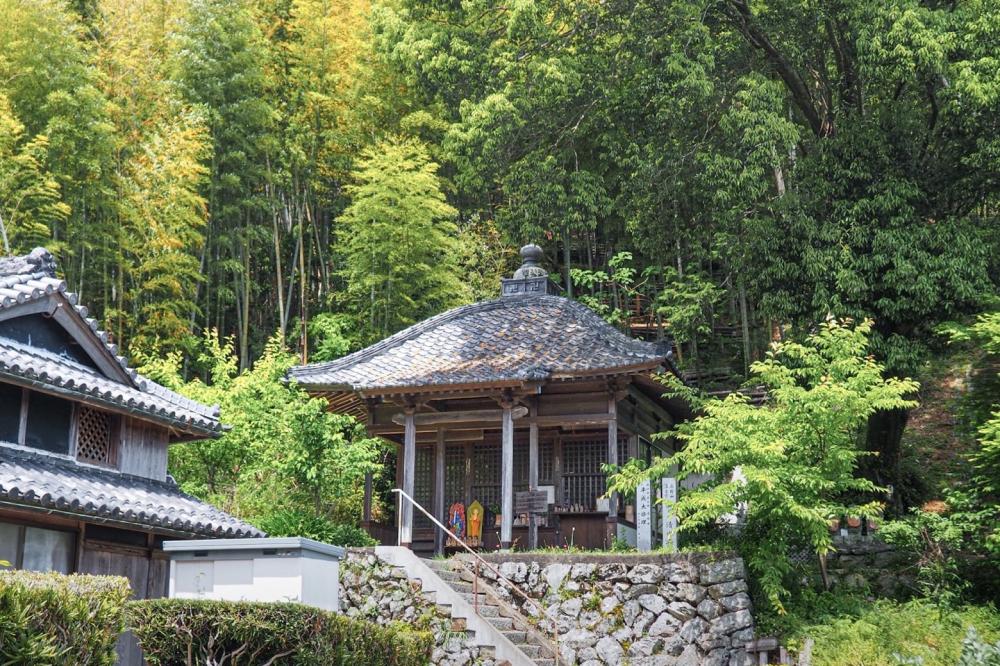
Seisuiji is the inner sanctuary of Tatsueji.
But you may get confused when looking at the Shikoku Pilgrimage guidebook because there are three temples titled as the Okunoin of Tatsueji.
The other two temples are Shushoji temple to the south of Tatueji, and Hoshitaniji temple, also known as Hoshi-no-iwaya, hidden on the south hillside of Mt. Nakatsumine, facing the 20th temple, Kakurinji.

This mini-version of Shikoku 88 temple pilgrimage is a short hiking trail with 88 stone buddhas maintained behind Seisuiji by locals. Follow the stone steps up to the hiking trail, which is about 4km long, taking an hour to walk. It’s a relaxing walk through beautiful trees.
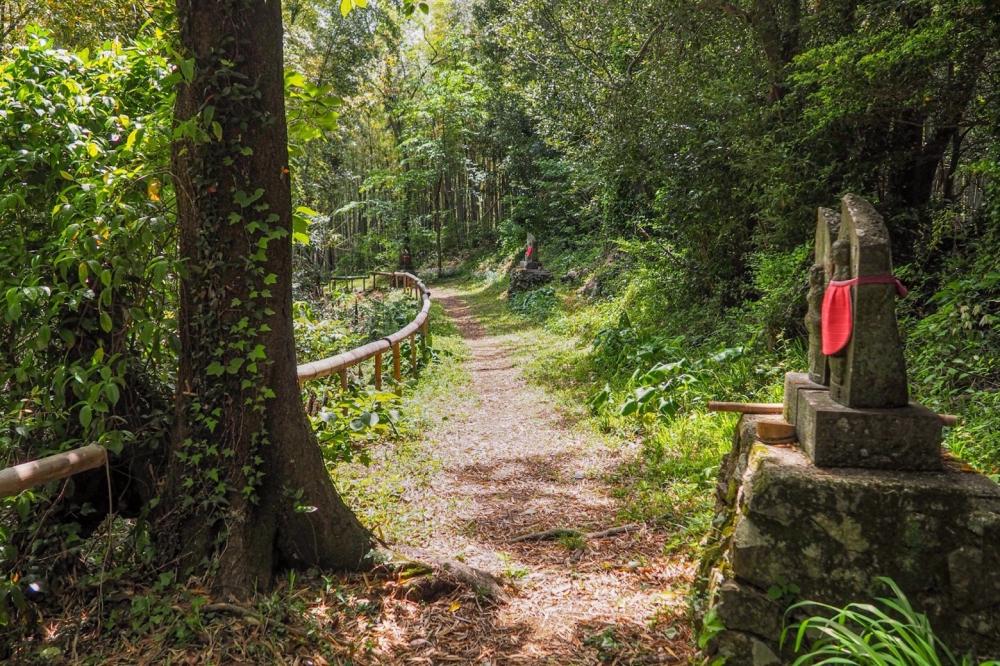

After the stone steps and then a short uphill climb, the rest of the path is mostly flat along the ridgeline of the mountain. Trails are maintained and trees along the trail are all tended throughout the year. It clearly shows how much the locals love and take care of this place.
The set of small stone Buddha and Kobo Daishi for each of the 88 temples of the Shikoku Pilgrimage sit along the trail at a regular intervals.
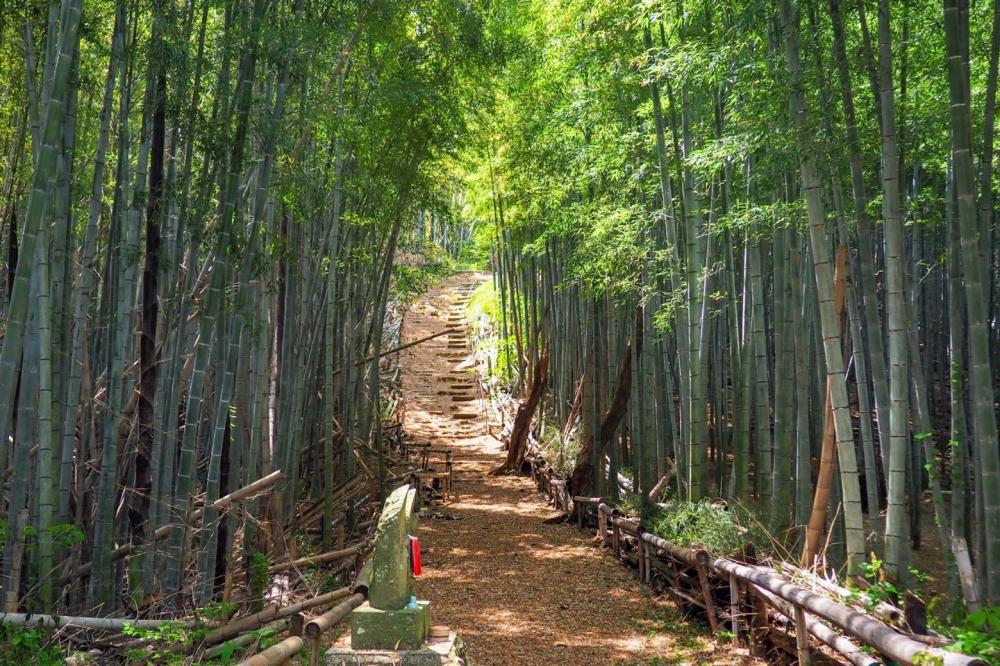
The trail goes through bamboo forests too.As you walk along the trail, take some time to look closely at the bamboo handrails and see the hand-written messages and warnings made by the locals. Many of them are in a humorous tone, making you chuckle.
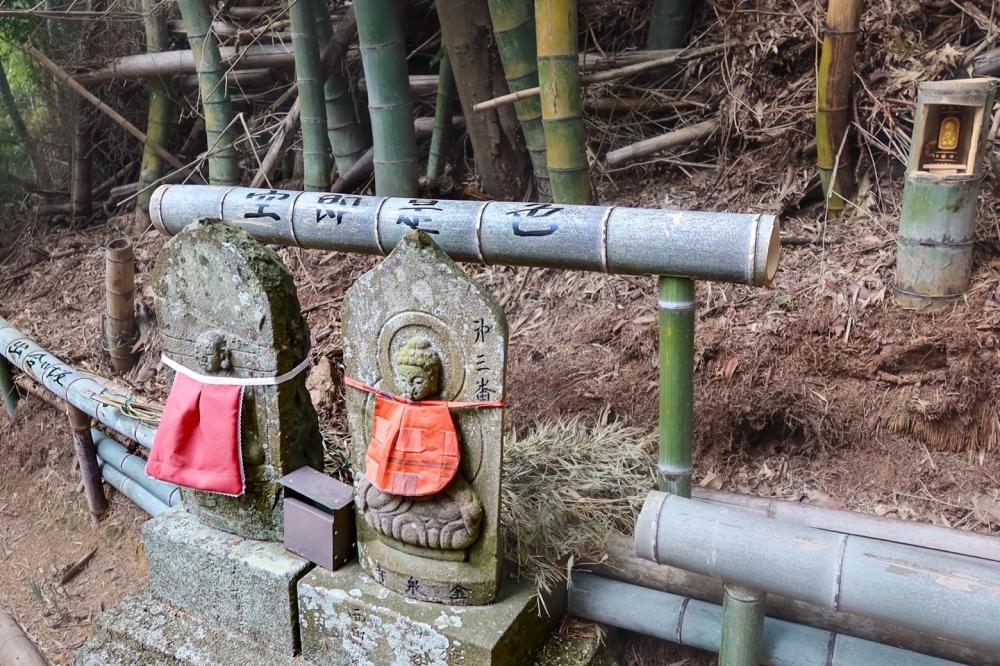
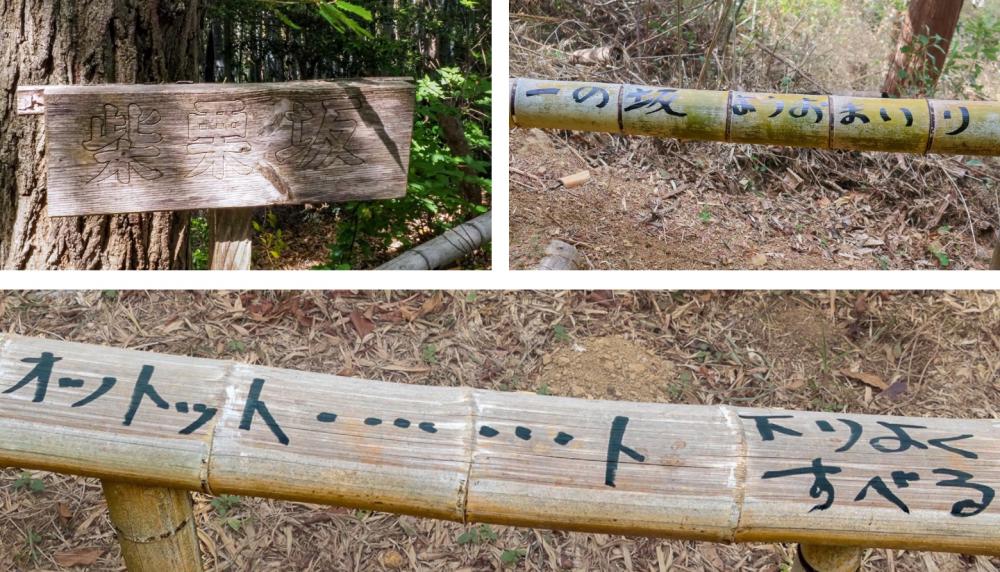
The locals planted various seasonal flowers along the trail and put the hand-made name plates next to each of them.
Everything here is hand-made and we can visibly imagine the locals having fun to take care of plants and giving names to the things along the trail.
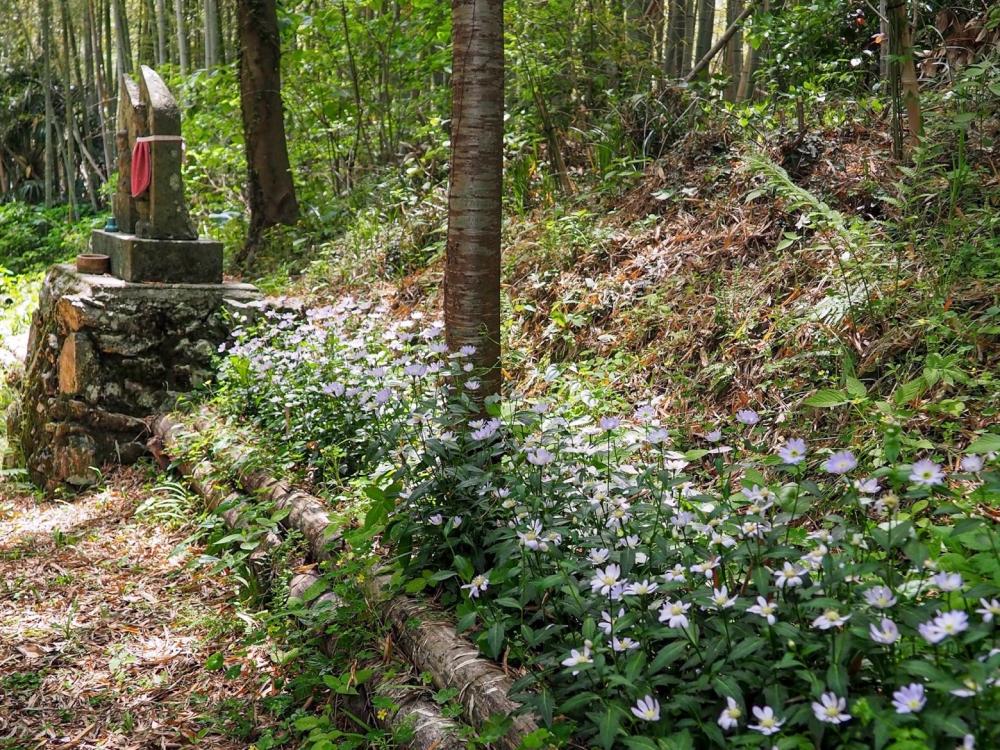
At the highest point of the mini Shikoku 88 trail, wooden and bamboo benches are placed for the visitors to have some rest. It is a nice place to eat lunch or have a snack.


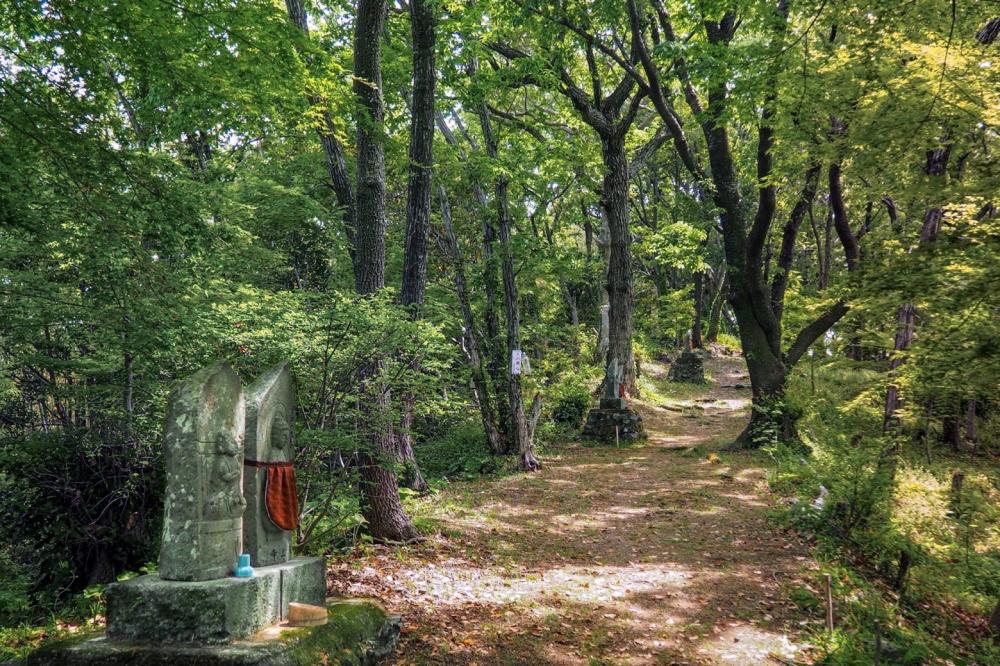
The circler mini-Shikoku 88 trail goes back to the same road near the stone pillar sign, but 200m further west. Just before coming out to the road, don’t forget to visit the last 88th stone Buddha at the entrance of a small temple.

Right after going back to the road it branches off. The narrow path to the right is called the Kushibuchi Shinnen pilgrimage trail.
Usually, pilgrims keep taking the the main road for cars and buses through the Kushibuchi-cho area of Komatsushima. However, the original pilgrimage trail in old times was not this main road but a narrower path between houses and farmland and some old signposts still remain along the way.
The original trail was once forgotten by pilgrims but lately a local group cleared the trail and gave proper maintenance for pilgrims to easily walk it. That is the Kushibuchi Shinnen pilgrimage trail.
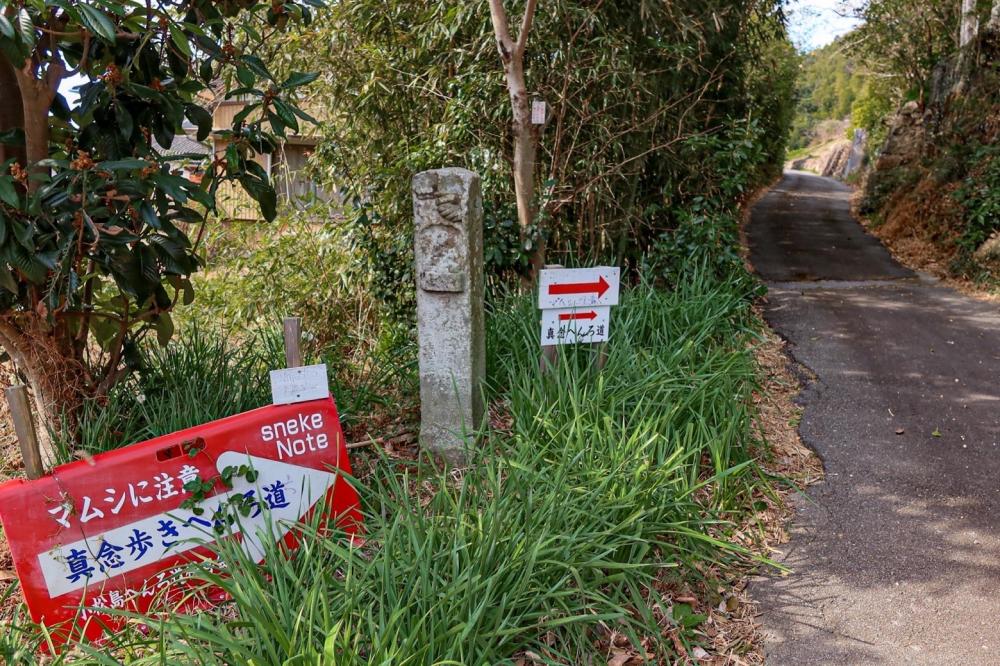

Three old stone signposts that remained along this old trail were donated by Shinnen, from whom the trail is now named after. Who in Shinnen?
He is a very special person in the history of the Shikoku Pilgrimage and is called as the reviver of the Shikoku pilgrimage and the father of the pilgrims.

Shinnen was a monk from Osaka in the early Edo period (late 17th century) who walked the Shikoku Pilgrimage route more than 20 times.
Based on his jorneys, he published a book with a lot of illustrations, titled "Shikoku Pilgrimage Guidebook.”
This book was the first guidebook for the Shikoku 88 temple pilgrimage, with detailed descriptions of what to wear and bring, rituals at temples, the location of temples, the main deities, chanting... and of course, route directions, distances between temples, and lodging information.
It was this book that each of the 88 temples was numbered 1, 2...88 for the first time, the same temple numbers we use today.

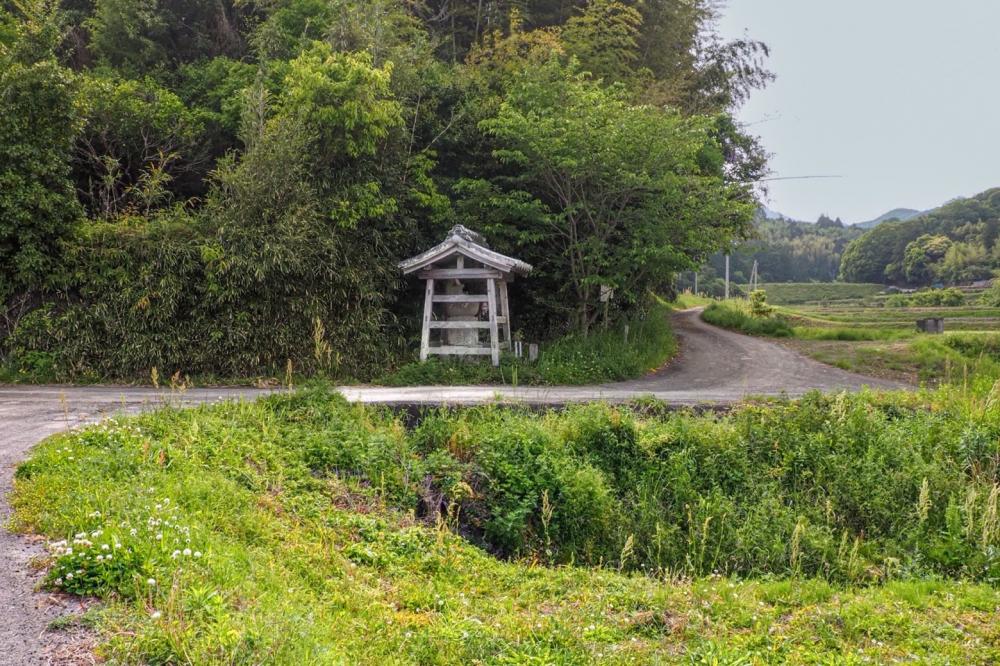
Thanks to his guidebook, even ordinary people, not just Buddhist monks or ascetic practitioners, began to make the pilgrimage. The guidebook laid the foundation for the Shikoku Pilgrimage boom that attracted people from all over the country.
It was repeatedly re-published until well-into the Meiji period (1868-1912) with almost no changes to the contents.
In addition to the guidebook, Shinnen donated more than 200 stone guideposts along the pilgrimage trails throughout Shikoku for other pilgrims.
These Shinnen signposts are the proof that the trail has been there since 400 years ago.
The Kushibuchi Shinnen Pilgrim Trail is truly an old pilgrimage route with three remaining Shinnen guideposts.
Walking along the Shinnen’s old trail in Kushibuchi, you see a lot of greenhouses full of fresh shiitake mushrooms that Tokushima is the largest producer of in Japan. Around the greenhouses, most of the Kushibuchi area is covered with endless rice paddy fields and low mountains.
The winding Shinnen trail goes through the sleepy farm village and eventually starts ascending gently to the high hills. Before hitting the hill, the trail suddenly goes into a beautiful bamboo grove and inclines more. There is a mountain pass beyond the bamboo, which is the border between Komatsushima city and Katuura town.
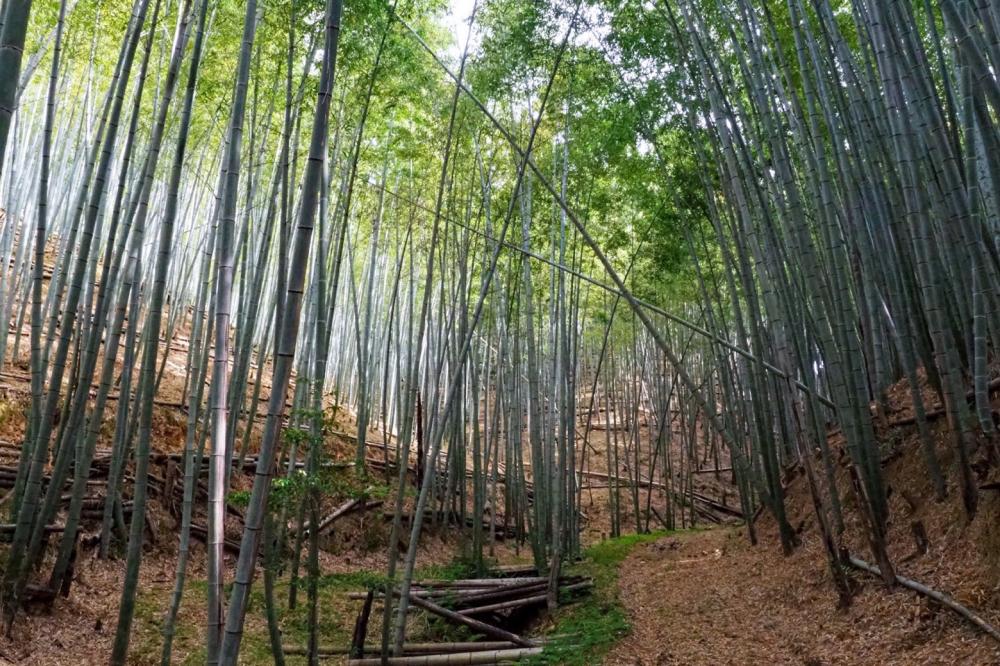
From the pass, there is a wonderful view of mountains and Katuura town spreading out in front of you.
Mt. Nakatsumine is the eastern edge of the Mt. Tsurugi range. If the air is clear, Mt. Takamaru and other mountains in Kamikatsu town should be visible far away.
Over the orchards and rice paddy fields below your feet is Katuura river. From here, the world of mountain towns in East Tokushima starts.
How many pilgrims in the history have stood at this same spot and overlook the same landscape?
This view. This indescribable feeling. You share the same experience with pilgrims throughout history.
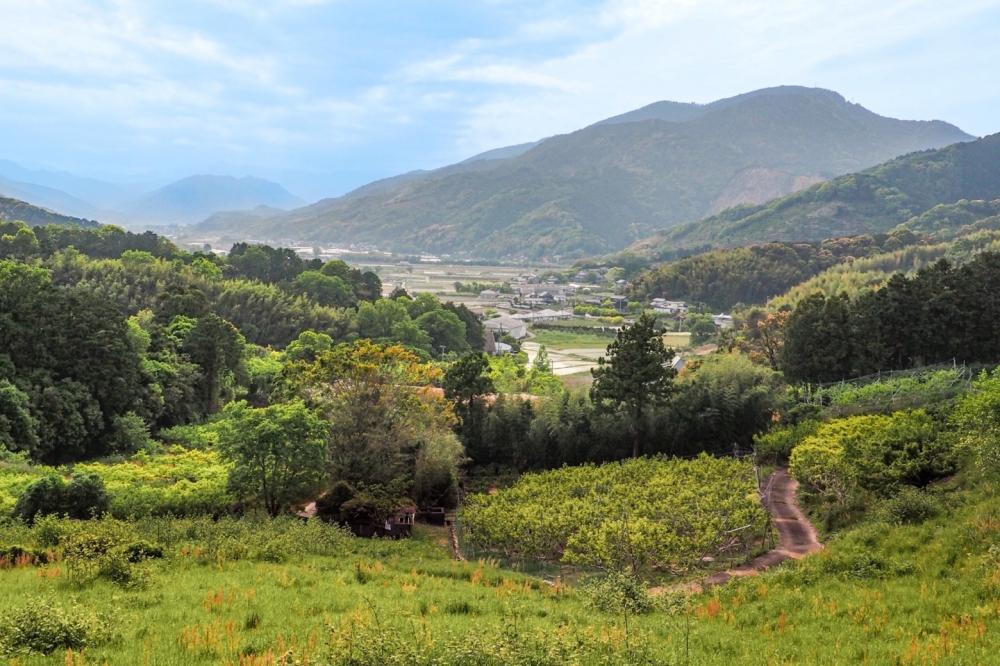
●Onzanji, the 18th temple of the Shikoku 88 temples pilgrimage
40 Onzanjidani, Tanocho, Komatsushima, Tokushima Tel : 0885-33-1218
●Tatsueji, the 19th temple of the Shikoku 88 temples pilgrimage
13 Wakamatsu, Tatsuecho, Komatsushima, Tokushima Tel : 0885-37-1019
https://www.tatsueji.com/
●Download “HIKE! TOKUSHIMA” booklet that includes the best trails in the eastern area of Tokushima
https://www.east-tokushima.jp/brochure/
